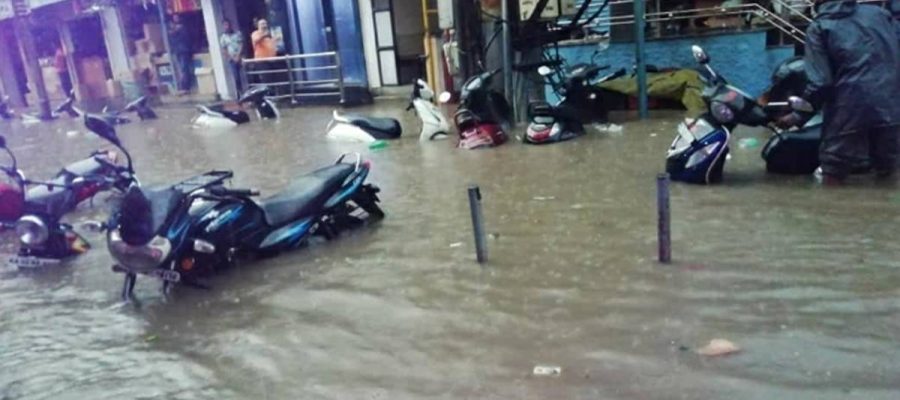The CAG report titled ‘Performance Audit of Management of StormWater in Bengaluru Urban Area’ showed that the shrinking of water bodies and drains has led to a loss of connectivity between the water bodies and the drains.
Several parts of Bengaluru witnessed flooding as heavy rain lashed the city on Sunday.
Incidentally, a report released by the Comptroller and Auditor General (CAG) of India in the last week of September had given an inkling that this could happen. The report had highlighted the issue of encroachment of lakes in the city and the Bruhat Bengaluru Mahanagara Palike’s (BBMP) failure to link drains with Storm Water Drains (SWDs).
The CAG report titled ‘Performance Audit of Management of Storm Water in Bengaluru Urban Area’ showed that the shrinking of water bodies and drains has led to a loss of connectivity between the water bodies and the drains.
According to the report, the BBMP was yet to remove 714 encroachments out of the identified 2,626 encroachments near water bodies in various zones. The audit observed 23 cases of significant encroachments, of which 16 cases were not in the list provided by the BBMP. The CAG also observed that the report provided by the BBMP chief engineer of the lakes division was not reliable as joint inspection showed that one of the encroachments stated to have been removed continued to exist and the evictions carried out were also incomplete.
The joint inspection of drains showed that the SWDs were not directly connected to the water bodies, lakes in a few cases and the runoff was flowing into constructed deviation canals. This increased the chances of flash floods, the report said.

The CAG also highlighted the issue of conversion and concretisation of water bodies. For instance, the Kamakshipalya lake has been turned into a sports ground and the Dasarahalli tank converted into the Dr BR Ambedkar stadium.
According to the data shared with the CAG by the chief engineer of the lakes division of the BBMP, of the 210 lakes/water bodies in Bengaluru, 66 were yet to be developed, 18 disused and 37 lakes were in the process of being rejuvenated. The 18 lakes that were reported to be in a state of disuse cover a total area of 254 acres. There is a significant chance of these lakes being encroached and converted for other uses in the future.
The report also stated that the failure of the BBMP to ensure linkage of drains with water bodies facilitated the drying up of a number of lakes in Bengaluru city, which, in turn, led to the conversion of lakes for other purposes.
According to CAG, SWD works estimated to cost Rs 61.21 crore were taken up specifically for sewage diversion and to improve environmental conditions near water bodies. The joint inspection showed that sewage was flowing invariably in all the stretches of drains and was also directly being discharged into lakes. This rendered the expenditure largely unproductive.
Highlights of CAG report
- Encroachment of lakes and SWDs resulting in decline in groundwater table, while increasing the risks of flooding.
- Dumping of solid waste, construction debris and so on in SWDs, lake catchment and in lakes.
- Sustained inflow of partially or untreated sewage, polluting existing surface and subsurface water resources.
- Reduced water holding capacity due to accumulation of silt and debris.
- Loss of interconnectivity between water bodies.
Source: Read Full Article


